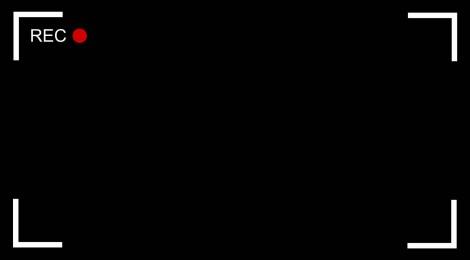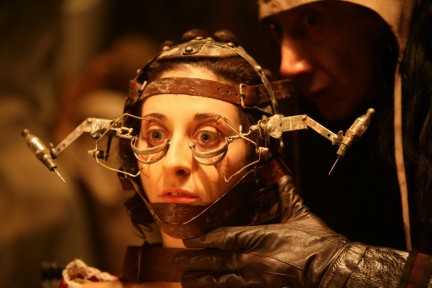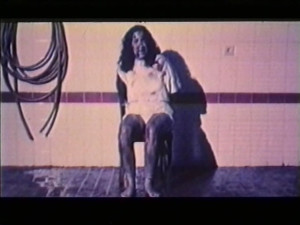
Found footage and film form in Spanish Gothic and horror
Mediático presents an essay on found footage in recent Spanish cinema by Ann Davies, Chair of Spanish and Latin American Studies at the University of Stirling, Scotland. Professor Davies researches contemporary Spanish cinema. She is currently writing on the contemporary Spanish Gothic, and has recently co-eded a collection of essays with Dolores Tierney and Deborah Shaw The Transnational Fantasies of Guillermo del Toro.
Cinema has often demonstrated a self-reflective fascination with the ways in which films are made. Such self-reflexivity has found a particularly comfortable home in Gothic and horror film, where careful use of technology can, perhaps ironically, point to a realm where scientific rationality holds no sway – yet we need the technology to tell us so. A particular trend is for found footage, films composed of or using film left behind by others in order to create a new narrative. Found footage is not confined to horror, but its use in the genre aims to provide a greater sense of realism and lend credence to the fiction that these terrible things really happened.
The 1999 American film release The Blair Witch Project kickstarted a vogue in horror film for found footage. Three students from Maryland in the US set out to make a film documentary the local legend of the Blair Witch: they go missing, and a year later their film is discovered. Apart from a caption that briefly contextualizes the backstory, the footage made by the students comprises the entire film. Blair Witch refocused our attention of the materiality of film and the active process of filming in horror and Gothic. Spanish filmmakers have similarly demonstrated the complex relationship between the camera and the uncanny, to the extent that film in its materiality isn’t simply a record of the horror but an integral part of it.
The success of films such as Blair Witch foreground a definition of found footage films as those shown primarily or entirely from the point of view of the person holding the camera and recording events. There is also, however, the possibility that found footage has roots going back beyond any suggestion of film technology. The theorist of the contemporary Gothic, Catherine Spooner, suggests that found footage is the cinematic equivalent of the more traditional discovered manuscript of the classic Gothic novel and its descendants (Spooner 2014, 191). Linnie Blake and Xavier Aldana Reyes argue that some films ‘rely, moreover, on the highly gothic trope of the found manuscript, proclaiming that the footage they contain has been discovered by a third party and assembled for viewing without the involvement of the original protagonists’ (Blake and Aldana Reyes, forthcoming, 4). The motif of the found manuscript has other uses beyond the faux-documentary format: a film using this motif can also be about the discovery of the footage and an analysis of it. This usage can also highlight the codependency of horror and its technology.
The phenomenon of finding the footage had an intriguing Spanish forerunner in Alejandro Amenábar’s Tesis (Thesis, 1996). Tesis’s plot centres on the discovery of a snuff movie by Ángela (Ana Torrent), a student carrying out research for her thesis on media violence. Quite why the videotape of this snuff movie had been left around by the perpetrators for anyone to find is unclear, but the subsequent investigation into the tape focuses in the first instance not simply on the tape’s horrific content but also on editing and camera techniques that allow Ángela and her sidekick Chema (Fele Martínez) to identify the camera used and to deduce that the victim knew her killer– the first steps in identifying the snuff move makers. A particularly striking moment is a shot of the filmed image, that emphasizes the snuff victim screaming in terror and yet also the graininess of the film image as it flickers across the screen, as well as subsequent cuts that signal the excising of the killer’s name. These encapsulates the equal fascination with both the horror image and the way in which it comes into being.
Tesis (Alejandro Amenábar, 1996)
Post Blair Witch, the best known example of found footage in Hispanic cinema is the original [REC] film (Jaume Balagueró and Paco Plaza, 2007), the first of a four-part franchise. The original film drew on the found footage motif in its story of a television reporter and her cameraman, trapped in a Barcelona house taken over by its infected, zombified and violent occupants. The camera, recording all the events, becomes the final and only witness to them: the film’s final shot is taken from the camera’s point of view as it lies on the ground, facing the final approaching horror (final that is, until [REC2] was commissioned). Xavier Aldana Reyes has written convincingly on the found footage format used in the first [REC] film, pinpointing both the opportunities and limitations in the format (Aldana Reyes, forthcoming). Films told entirely from the pov of the person operating the camera enables cheap, digital filmmaking and a compression of storyline that makes the horror inescapable – no establishing or continuity shots. Such compression limits storylines, however; and it becomes increasingly hard to explain why the camera keeps rolling when the operator should surely make a run for it in the opposite direction (155). The limitations meant that the directors took a looser approach to found footage and use of the subjective camera in [REC2] and abandoned the approach altogether after the first half hour of [REC3].
Nonetheless other filmmakers were happy to follow the trend set by [REC]. In the case of Atrocious (Fernando Barreda Luna, 2010), an adolescent brother and sister decide to investigate urban legends in a clear homage to Blair Witch: they get lost in the woods and experience fear of the unknown at night. As in Blair Witch the actors had to learn to operate the cameras and record themselves, though for Atrocious the crew were just out of shot, in contrast to the isolation of actors from crew in Blair Witch. There is also a nod to Ringu (Hideo Nakata, 1998) in the story of the ghost of a girl that fell down a well, the story that provides the legend the siblings are investigating. Ringu’s motif of a cursed videotape also harks back to the Gothic discovered manuscript.
Atrocious plays around with the resulting found footage that undermines its apparent authenticity in a way that its American predecessor doesn’t. Blair Witch tells its tale in chronological order (apart from the opening caption that tells us the footage was found a year after the filmmakers went missing). Atrocious starts at the end of the found footage and then visually rewinds until a police advisory warning is screened. Towards the end the film plays very freely with the idea of found footage, inserting police footage and news clips, rewinding freely, and cutting to a recording of a psychiatric interview with the mother, who has killed her children while possessed. This clearly indicates a control over both the editing and the viewing: it is also clear that the footage has been edited from the occasional very short ellipses of time that are occasionally cut. The editing goes against a sense of uncut authenticity. This is a potential contradiction for Blair Witch too, as Peter Turner suggests (2014, 46), but in the case of Atrocious the film supplies an implicit but fairly obvious answer that the controlling hand is that of the police, the only people who would logically have access to all the footage concerned. At first glance this would suggest Atrocious as a failure as compared to its forerunner, which leaves both editorial control and horror threat to be determined by the viewer, heightening the sense of horror through mystery and understatement. Yet in showing its hand Atrocious draws our attention to film form as something we both do and do not control. We may be masters of the remote control or the editing suite, but not of what the camera itself captures.
Atrocious has further ghosts from the past in terms of visual technology, such as the old TV and VCR in the basement that allows the teenagers to watch old horror films. There are other instances of past technology informing the present, as in Elio Quiroga’s NO-DO (The Haunting, 2009), which features the discovery of footage from a clandestine newsreel that documents occult experiments carried out on children, under the secret auspices of the Catholic Church in Spain. The main story, set in the present day, focuses on Francesca, who moves into a haunted house with her husband; and it follows Francesca’s effort to find out the explanation for the haunting. The ghosts turn out to be those of the victims of the Church’s experiments. Francesca is played by Ana Torrent – Torrent is best known for playing the little girl in two key films of the 1970s that critique the Franco regime, El espíritu de la colmena (Spirit of the Beehive, Víctor Erice, 1973) and Cría cuervos (Raise Ravens, Carlos Saura, 1975). (As an adult, however, she is more strongly associated with Tesis, suggesting that Torrent’s persona has form when it comes to discovering lost footage.) The newsreel comes from an earlier time: it derives from the Noticias Documentales (or NO-DO), state news stories made under the auspices of the Franco regime. Because of these points, and because Franco himself appears briefly in other news footage shown at the film’s beginning, interpretations of the film have to date emphasised the thematic thread of recuperating the regime’s victims: indeed, some Spanish reviews thought that this was the only theme that redeemed an otherwise mediocre film (see Pérez Morán 2009 and Rubín de Celis 2009).
Such a standpoint neglects the variation on the found footage that Quiroga introduces. The recovered footage of NO-DO comes complete with its skull and crossbones mark that suggests the nature of the images it contains, yet for most of NO-DO we do not have the point of view of the original cameraman, Senel (who has apparently disappeared). Senel had found a way to record supernatural events on a special form of film stock and thus recorded the children succumbing to an elemental, who still occupies the house where the occult experiments occurred and where Francesca now lives. For most of the film Quiroga distinguishes between scenes taking place in the present day and the found footage by presenting the former in colour and the latter in black and white. But in the climactic scenes, as Francesca ascends to the attic of her house and finds reels of found footage stored there, she enters into the footage itself: we switch from colour to black and white as she walks across the attic floor and the new viewpoint appears to be that of the ghostly Senel. The blurring between different film stocks and the surrender of colour to black and white strongly hints at the ultimate surrender of the living to the dead. Francesca flees the house with her family at the film’s end, retreating to a modern suburb, while the house itself burns to the ground. She has survived but she has not triumphed.
The contrast between the intangibility of the ghosts and the material film that holds their image is emphasized further by the fact that the footage rather than the spirits offers an explanation of why the house is haunted. The NO-DO reels found in the attic serve the purpose of the Gothic manuscript: they connect the present to the past as do the old horror videos in Atrocious, and they also reveal the secret behind the surface narrative of the official state newsreels in which Franco appears. Yet they do more than this: they suggest an intricate relationship of technology and the supernatural. Jeffrey Sconce memorably talked of the history of this relationship in his book Haunted Media (2000): in films such as NO-DO it is technology that haunts the present. There is a small snippet of film, complete with skull and crossbones, that seems to have escaped from the confines of the attic where it was previously kept, waiting to be found by one of the characters. Like the ghosts, the footage seems to be uncannily alive and on the move, both containing the horrible secret and making it known. Format does not simply record the horror but forms an integral part of it.
The final film I’d like to mention here is one that stresses not simply the horror of the final footage but the act of creating it. This is the rather messy Imago Mortis (Stefano Bessoni, 2009), set in a film school where the students are scripting and filming their own movies. The backstory of Imago Mortis concerns an invention called thanatography, a way of recording the last image seen by a person at the moment of their death. This immediately suggests Michael Powell’s Peeping Tom (1960): in Imago Mortis, however, the method involves extracting the victim’s eyeballs. The professors of the film school are sinister figures who delight in a successful thanatographic print at the film’s end: as with NO-DO’s Senel, they are interested in recording the impossible. Unlike Senel, however, they represent a decadent, corrupt and dangerous older generation with an unhealthy connection to film technology: not the healthiest guardians of young film students. In this they remind us of Tesis, the Spanish film with which we began. The snuff movie ring there is led by a university professor whose bottom line of business is that death sells. They might also remind us of the police playing with tapes in Atrocious. Technology and patriarchal authority figures don’t mix: we can add to this NO-DO’s Catholic Church and their record of occult experiments.
These films indicate that technology is not always on the side of the heroes as in [REC] and Blair Witch: far from simply recording horror in an objective way that supposedly characterizes found footage, the medium of film actively contributes to it. But the fascination with horror technology is not confined to authority figures. Apart from the weak and unstable hero, the students of Imago Mortis readily adopt the principles of their tutors as they make their macabre short films; and it is a student who turns out to be the main murderer. If in Gothic the past haunts the present, it is nonetheless later generations who prove just as susceptible to technology’s haunting quality. Spain’s contemporary horror directors clearly share this susceptibility.
References
Aldana Reyes, Xavier (forthcoming), ‘The [REC] Films: Affective Possibilities and Stylistic Limitations of Found Footage Horror’, in Linnie Blake and Xavier Aldana Reyes, eds. Digital Horror: Haunted Technologies, Network Panic and the Found Footage Phenomenon (London: I. B. Tauris), 149-169.
Blake, Linnie, and Xavier Aldana Reyes (forthcoming), ‘Introduction: Horror in the Digital Age, in Linnie Blake and Xavier Aldana Reyes, eds. Digital Horror: Haunted Technologies, Network Panic and the Found Footage Phenomenon (London: I. B. Tauris), 1-13.
Pérez Morán, Ernesto (2009), ‘No-Do’, in Equipo Reseña, ed., Cine para leer enero-junio 2009 (Bilbao: Mensajero), 262.
Rubín de Celis, Andrés (2009), ‘NO-DO’, Cahiers du Cinéma España 24, 42.
Sconce, Jeffrey (2000), Haunted Media: Electronic Presence from Telegraphy to Television (Durham, NC: Duke University Press)
Spooner, Catherine (2014), ‘Twenty-First Century Gothic’, in Dale Townshend, ed. Terror and Wonder: the Gothic Imagination (London: British Library), 180-205.
Turner, Peter (2014). The Blair Witch Project (Leighton Buzzard: Autuer).








